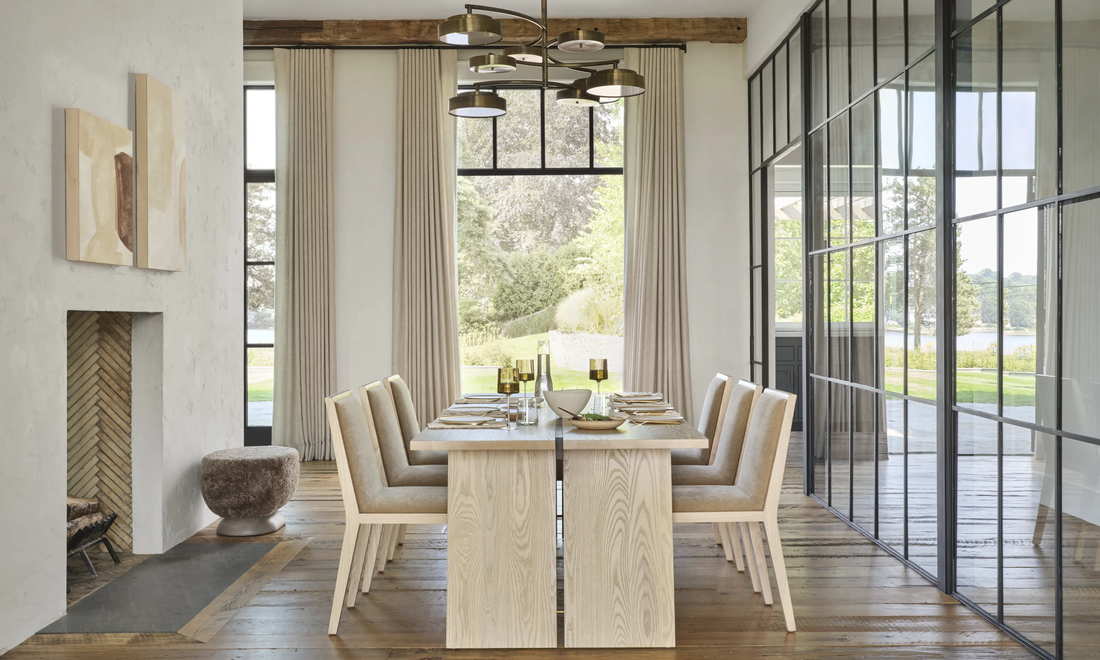
FUNCTION AND FEEL
When starting the design process for your dining room, it's crucial to determine its purpose within your home. A thoughtfully designed dining area can serve as not only a space for meals, but also a gathering spot for loved ones and a chance to showcase your unique aesthetic within the home.
When choosing a dining table shape, it's important to keep in mind a few factors beyond personal taste. For instance, rectangular tables such as The Genesis or Magna are a classic option and work well in rectangular rooms, creating a clean and balanced look.They also tend to come in larger sizes and will be the best choice for accommodating a large number of guests. A round dining table is a highly versatile option that can fit well in various spaces. —with their accommodating footprint, they can be used to create a dining area within a more compact room, or in an open concept space where their round top will emphasize the airy, free-flowing environment. We designed our Kora, Wabi or Mykonos dining tables with a range of sizes up to 1.4m in diameter, allowing for a larger seating footprint while still maintaining the intimate family feel.

FIND YOUR FIT
When choosing the perfect dining table for your space, there are some general guidelines that you should keep in mind. Our designers have listed the main factors to consider when deciding on the size of your dining table.
- Measure the length and width of your dining room, and subtract six feet from each measurement. This will allow for 36” of clearance all the way around the table to comfortably sit in a chair and move around the space.
- For open concept rooms, start with the amount of people you are looking to seat and create a zone around your table size keeping to the same clearance rules as above.
- When choosing dining chairs, it's important to think about the space between the chair seat height and the bottom of the table top. To ensure comfortable seating, leave around 12" of space between the table and the chair seat height, allowing guests to comfortably cross their legs under the table. Our Renoir, Hans, and Bombay Dining Chairs were designed with this in mind, providing 17.5 to 21" of width for added comfort. They pair beautifully with our dining table collections.
- To ensure the comfort of your guests while dining, it's important to allow for 24" of space for each chair at the table. This will provide ample room for each guest to sit comfortably without feeling cramped. Our helpful guides below demonstrate the number of seats each table width can accommodate, with the higher end of the range allowing for a more relaxed, intimate dining experience.
Our expert designers recommend a range of seating based on the length of your dining table. The recommended seating layouts at the low end of the range suggest a more spacious seating arrangement. The upper end of the recommended seating layouts represents a more casual seating arrangement to accommodate additional guests:




